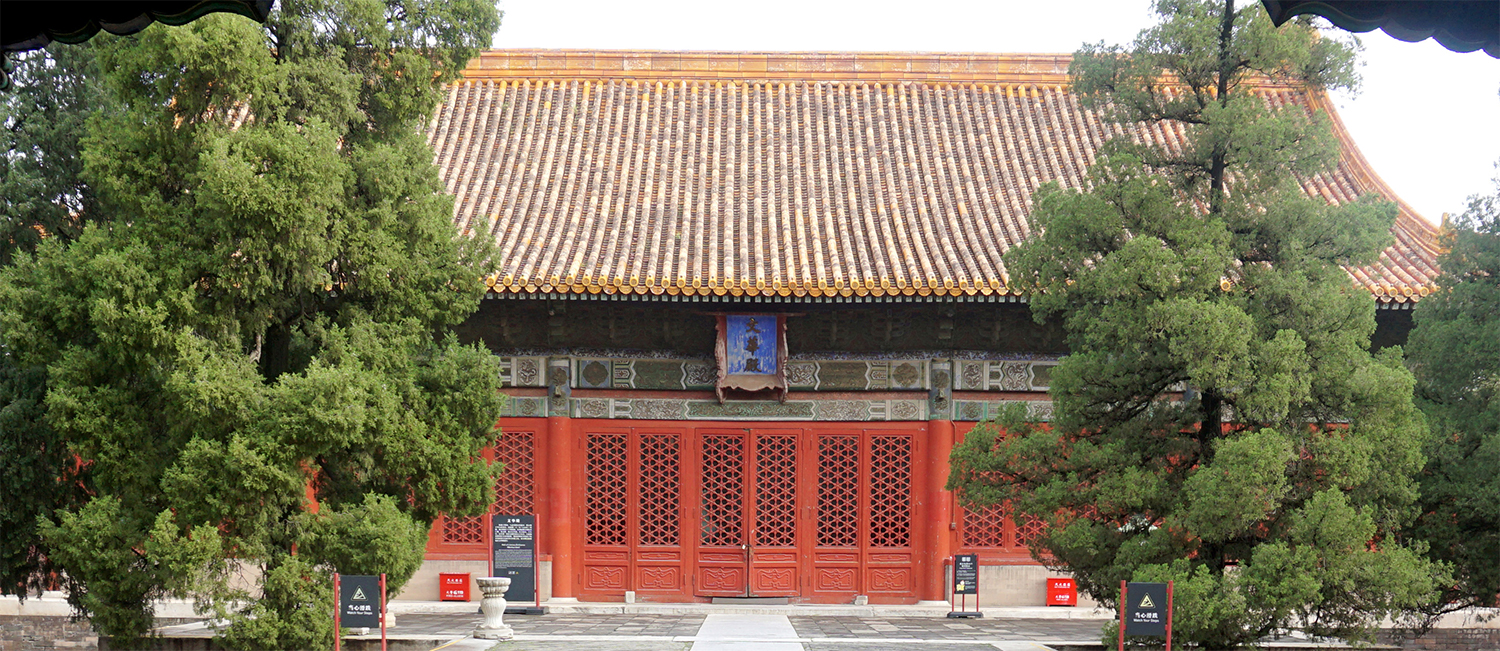The Hall of Literary Brilliance (Wenhua Dian)
The Hall of Literary Brilliance, built in the early Ming Dynasty, was originally where the crown prince lived. Back then, it was roofed with green- glazed tiles, with a stone carving of three auspicious clouds in front of the door, a symbol of the crown prince's status in ancient times. In 1536, it began to serve as Emperor Jiajing's temporary dwelling palace, with its roof redone in yellow-glazed tiles, which have been retained to this day.
The Hall of Literary Brilliance was where the emperor studied the Four Books (namely, The Great Learning, The Doctrine of the Mean, The Analects of Confucius, and The Mencius) and Five Classics (The Book of Changes, The Book of Songs, The Book of Rites, The Book of History, and Spring and Autumn Annals) with knowledgeable ministers. This evolved into a routine during Emperor Zhengtong's reign of the Ming Dynasty. The emperor also daily met ministers here to discuss state affairs.
During the period of Emperor Qianlong, the Belvedere of Literary Profundity (Wenyuan ge) was built behind the Hall of Literary Brilliance to store the largest book series in ancient China — The Complete Library of the Four Branches of Literature.
A building functioning as a library, the Belvedere of Literary Profundity is covered with black tiles because the color black corresponds to water in the Five Elements. This design represents a prayer to protect the library from fires.
Water-related decorative elements such as seawater, lotus, and aquatic weeds can be seen everywhere here, and the stone-carved balustrades are adorned with patterns like tortoises, crabs, fish and shrimp. The Golden Water River also flows in front of the building. All of these convey the idea that water extinguishes fires.
The Hall of Literary Brilliance, a symbol of the imperial court's high esteem for cultural cultivation, manifests the Chinese tradition of attaching importance to classics and education.

文華殿
明初,文華殿落成,宮殿屋頂用綠色琉璃瓦,門前石雕用“三元紋”,即象征太子身份的三團祥云。嘉靖十五年(1536)改為皇帝便殿,覆黃瓦沿用至今。
文華殿是舉行“經筵”的場所。經筵,是指皇帝與有學問的大臣共同研讀四書五經,于明代正統年間形成規制。經筵以外,文華殿還舉行日講,君臣之間探討治國理政之道。
乾隆年間,文華殿后建文淵閣,用于收藏中國古代最大的叢書《四庫全書》。文淵閣作為藏書樓,覆黑瓦。黑色對應五行中的“水”,以期為藏書樓克火。因此,在文淵閣及附近區域,隨處可見海水、荷花、水草等紋飾,石雕欄板上還有烏龜、螃蟹、魚蝦等,金水河也從閣前流過。凡此種種,皆取水能滅火之意。
文華殿是天子文經天地的象征,也昭示著中華文化重視經典、篤學不倦的歷史傳統。
